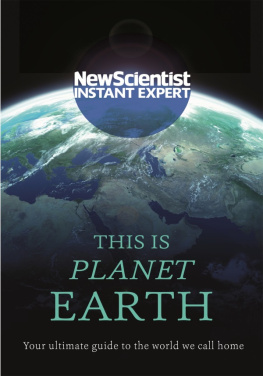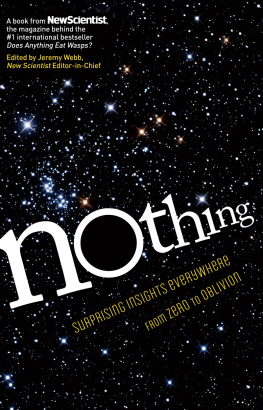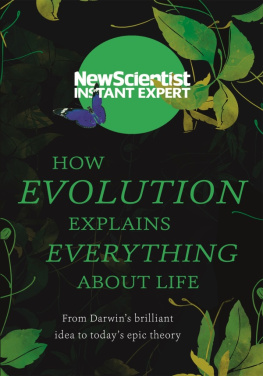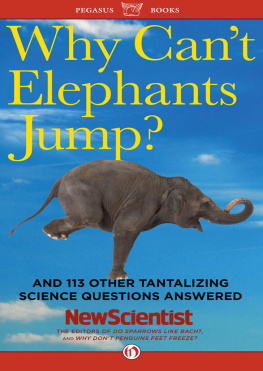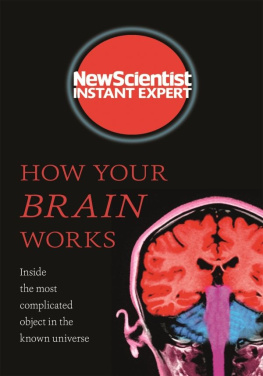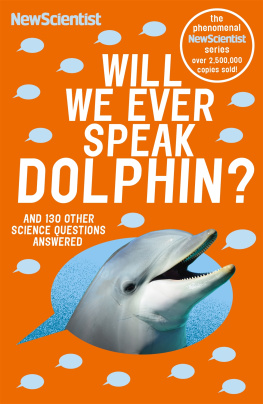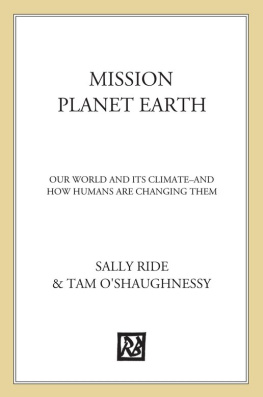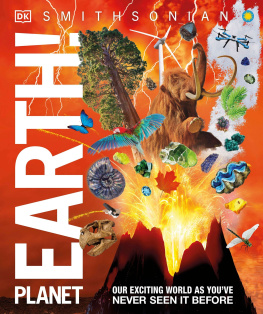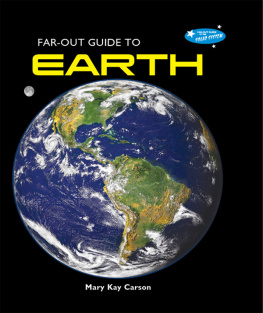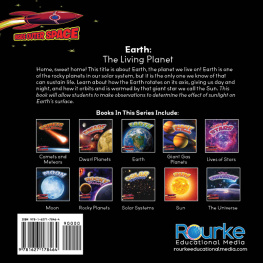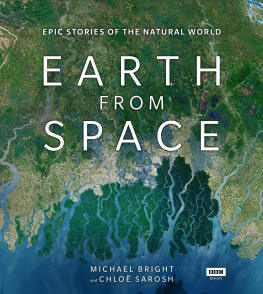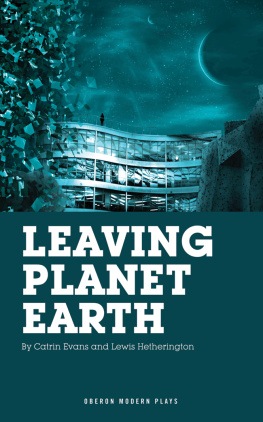This is Planet Earth
Your ultimate guide to the world we call home
NEW SCIENTIST
Contents
Series introduction
New Scientists Instant Expert books shine light on the subjects that we all wish we knew more about: topics that challenge, engage enquiring minds and open up a deeper understanding of the world around us. Instant Expert books are definitive and accessible entry points for curious readers who want to know how things work and why. Look out for the other titles in the series:
The End of Money
How Your Brain Works
The Quantum World
Where the Universe Came From
How Evolution Explains Everything about Life
Why the Universe Exists
Your Conscious Mind
Machines that Think
Scheduled for publication in 2018:
How Numbers Work
Human Origins
A Journey through the Universe
Contributors
Editor: Jeremy Webb, Editor-at-Large, New Scientist
Instant Expert Series Editor: Alison George, Books Editor at New Scientist
Guest contributors
David Cromwell writes about ocean circulation in .
John Gribbin introduces the structure of the atmosphere in . He is Visiting Fellow in Astronomy at the University of Sussex, UK, and author of numerous books, including Planet Earth: A Beginners Guide (2012).
Susan Hough is a senior seismologist with the Southern California Earthquake Center and a Fellow of the American Geophysical Union. Here, Susan covers what we know about earthquakes and their prediction in .
Jeff Masters focuses on extreme weather in . He is co-founder of the Weather Underground online weather information service, where he is director of meteorology.
David Rimmer is a retired senior lecturer in soil science at Newcastle University, UK. He introduces the section on soils in .
Toby Tyrrell describes the failings of the Gaia hypothesis in . He is a professor of Earth system science at the University of Southampton, UK, and author of On Gaia: A Critical Investigation of the Relationship between Life and Earth (2013).
Peter Ward is a professor of biology at the University of Washington in Seattle and author of The Medea Hypothesis: Is Life on Earth Ultimately Self-Destructive? (2015). Here, he explores the Gaia hypothesis in .
Thanks also to the following writers:
Anil Ananthaswamy, Colin Barras, Stephen Battersby, Catherine Brahic, Sue Bowler, Stuart Clark, Andy Coghlan, Philip Cohen, Daniel Cossins, Richard Fifield, Linda Geddes, Shannon Hall, Jeff Hecht, Bob Holmes, Joshua Howgego, Ferris Jabr, Victoria Jaggard, Graham Lawton, Michael Le Page, Rick Lovett, Myles McLeod, Michael Marshall, Katia Moscovitch, Rachel Nowak, Sean ONeill, Stephen Ornes, Jheni Osman, Fred Pearce, Kate Ravilious, Christina Reed, Eugenie Samuel Reich, David Shiga, Colin Stuart, Richard Webb, Sam Wong, Marcus Woo.
Introduction
Earth is an astounding place. You might not think so as you look out of the window and think how ordinary everything seems. But study it closely, as scientists do, and you discover amazing things; things you may find hard to believe. At turns, the planet has been a red-hot blob of molten rock and a giant snowball. The Arctic once basked in tropical temperatures and the entire Mediterranean Sea dried up only to be refilled by the mother of all floods.
Even now we rely on unseen marvels every day. The planet is protected from dangerous ultraviolet rays by one invisible shield, while another keeps it safe from the torrent of energetic particles streaming from the Sun. Our hospitable climate is a wonder in itself, kept in check by the nature of soils, ventilation of the oceans, reflectivity of clouds, the forging and erosion of rock and volcanic eruptions which spout gases that both cool and warm the planet.
And then theres Earths tour de force: life. You might think that you as a representative of living things are unexceptional. But on a cosmic scale thats simply not so. You were born on the only planet in the universe that we know of where life exists and certainly the only place where organisms read books.
The other thing to bear in mind is that life does not live on Earth; it is part of Earth. The soils role in tempering our climate is mediated by microbes. And clouds reflect more sunlight back into space when microbes high in the atmosphere make them whiter. Even some of the rocks of the planets outer crust are made up of the bodies of long-dead creatures.
Earth is not just a giant boulder flying through space, but a machine where living things interact with geology, water, ice and the atmosphere. Everything is interconnected. This is Planet Earth is an introduction to anyone who would like to better understand all these things and how they fit together.
The first two chapters deal with Earths formation and history, taking us from its first appearance in a swirling cloud of gas around the young Sun to the tsunami that cut off Britain from the rest of Europe. develop the idea of plate tectonics, which has enabled us to understand more about such things as earthquakes, the planets thermostat and the future wanderings of our continents.
explore different spheres of the planet, starting with the atmosphere. We spend most time in the lowest breathable layer where life exists and weather happens, but also venture all the way up to the edge of space. For the hydrosphere we dive into the oceans to examine the gigantic pumps that drive global currents. Finally, in the biosphere, we search for clues to how life got started and how it has been influencing the planet ever since.
To close, we focus on humanitys influence on Earths systems. deals with the biggest threat we know of today to the existence of life climate change. We check what we know, where the gaps are in our knowledge, and ask whether we can fix things.
Hopefully, this book will change your perspective on Earth so you will never see it as ordinary again. Who knows, you may even be astounded.
Jeremy Webb, Editor
Formative years
The Earth and Moon were born from chaos. The heat and violence of the early solar system have conspired to shroud much of Earths early years in mystery. What, then, do know and not know about how it developed into the dynamic planet we know today, a place fit for life to evolve?
A home unique in the universe
Very occasionally, routine events produce exceptional results. Thats what happened 4.6 billion years ago, on a minor arm of an unremarkable spiral galaxy.
A vast cloud of gas and dust began to collapse into a dense ball of matter. As gravity pulled more and more material towards it, the temperature and pressure at its core increased to the point where nuclear fusion kicked in. That released vast quantities of energy and marked the creation of a star.
What started the process off, we dont know but it had happened countless times before and the star itself was certainly nothing special.
As the newborn star began to spin, smaller bodies started to coalesce in orbit around it. Gas molecules and dust particles fused to form objects the size of rocks; which collided to create boulders, then planetesimals. Their increasing gravity pulled in still more matter to create hot, molten versions of the planets we know today.
Eight planets formed and on the third one from the star something truly remarkable happened. The right conditions enabled life to emerge and flourish. Eventually, intelligent life evolved in the form of beings capable of asking how their planet had formed and how it came to nurture life. They called their celestial neighbourhood the solar system, named the star Sun and their planet Earth.

